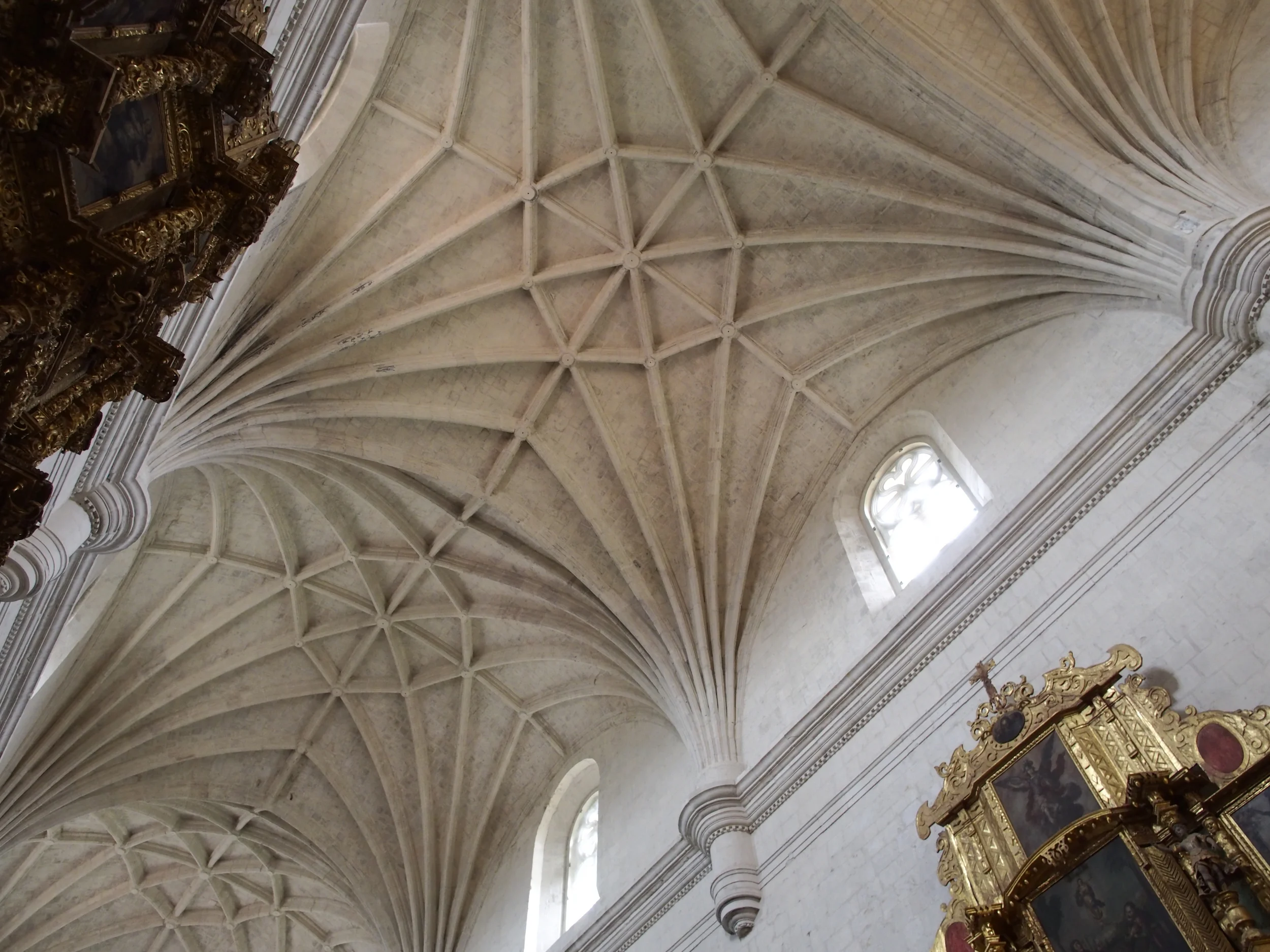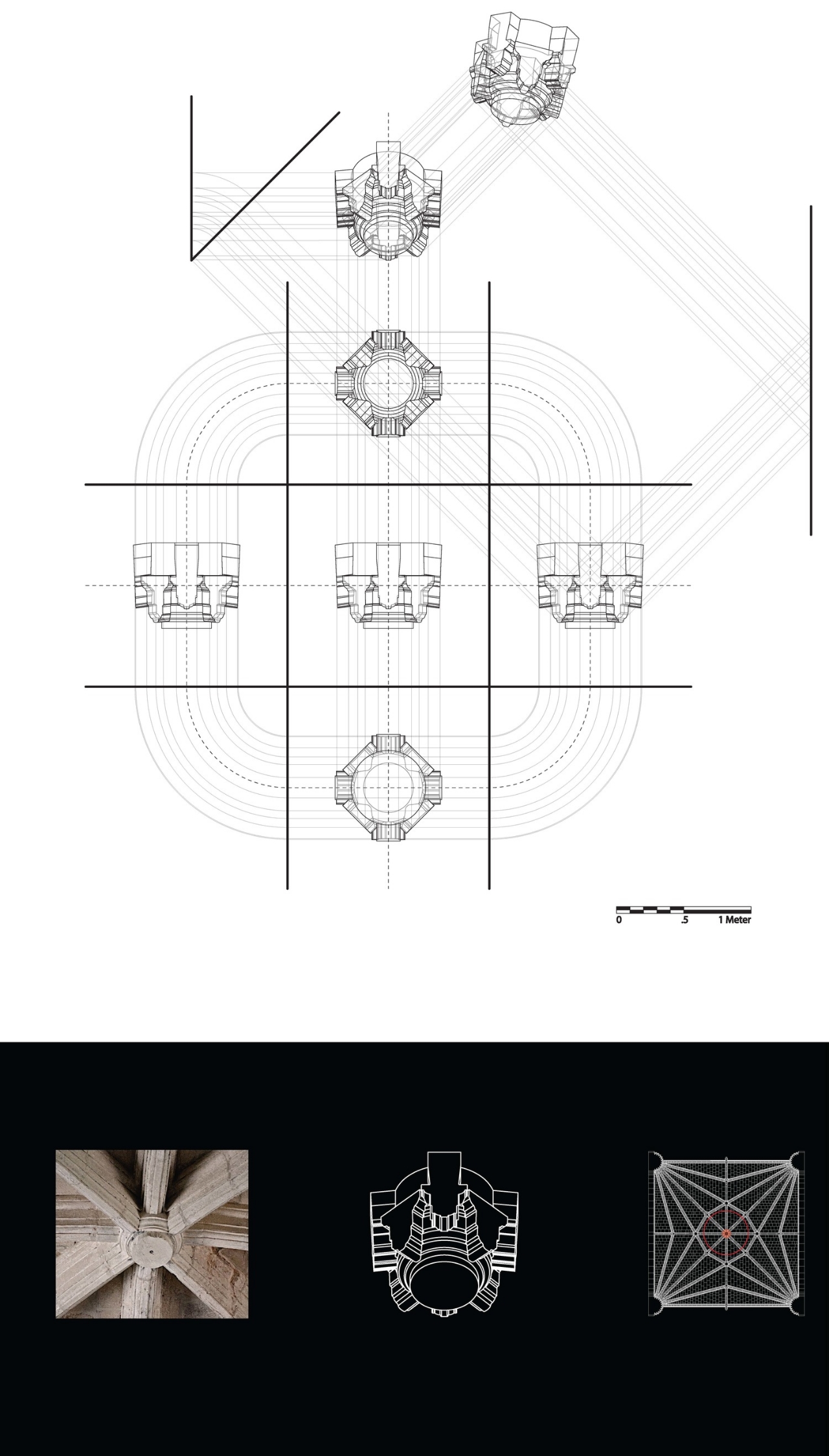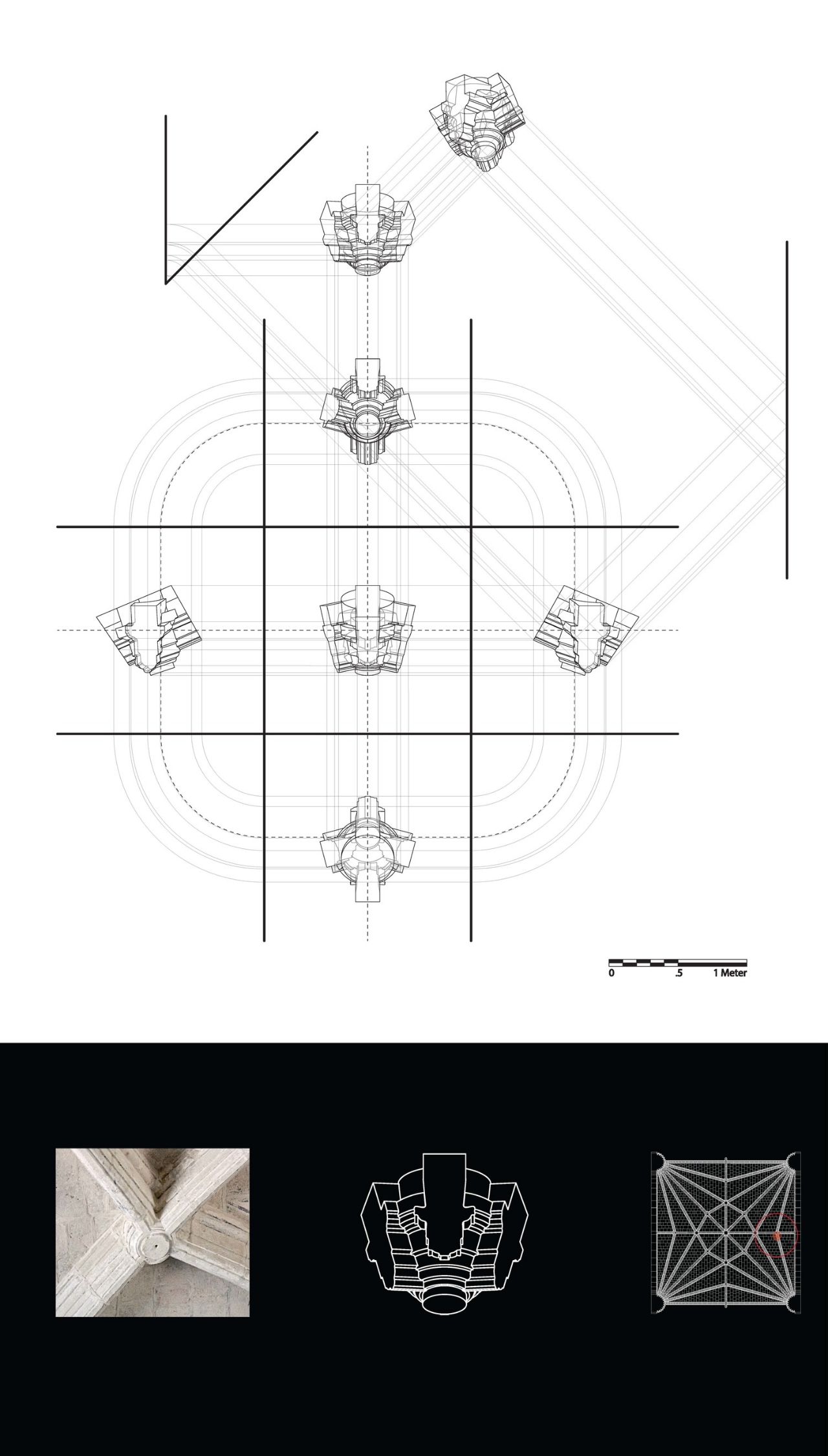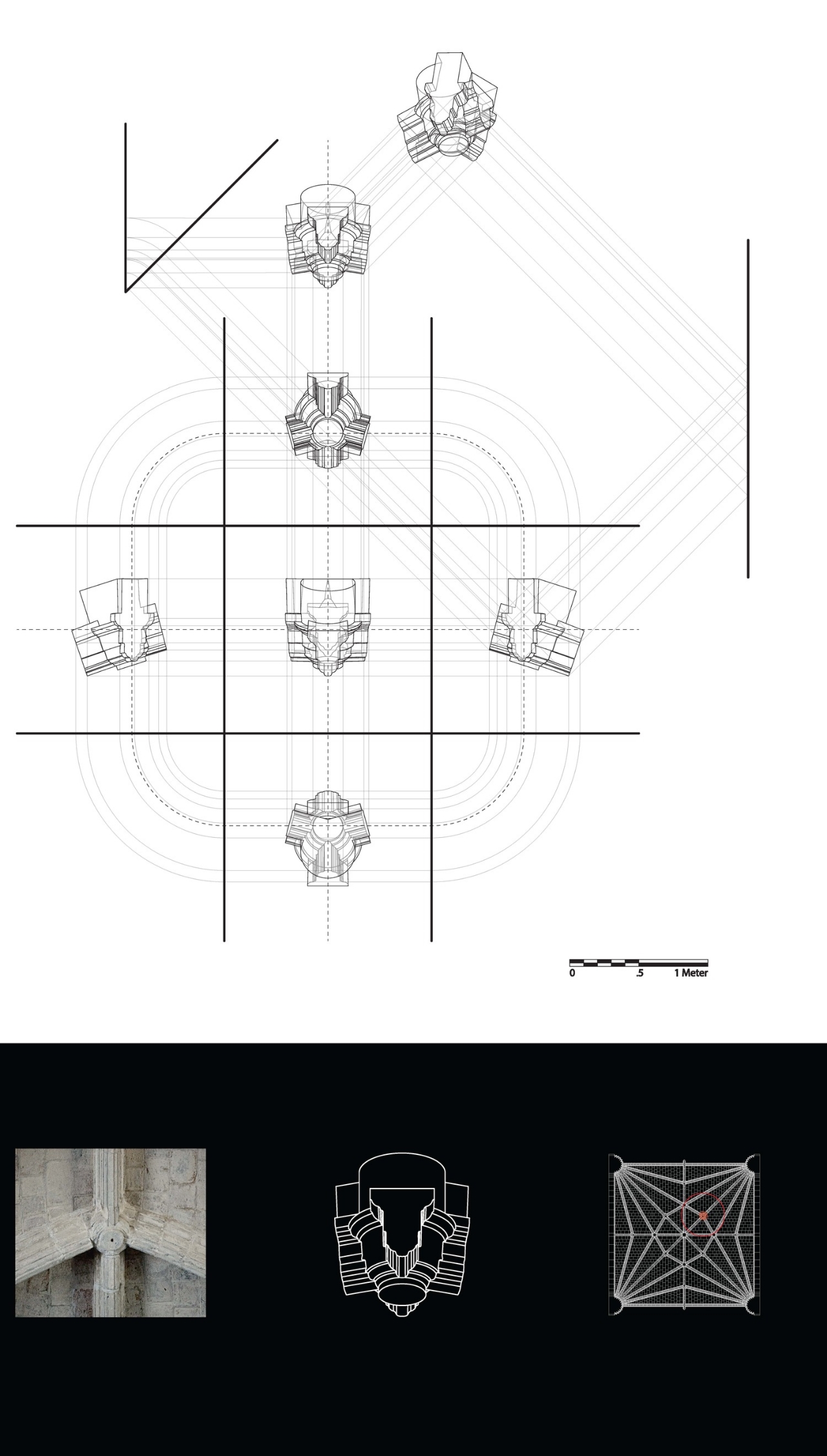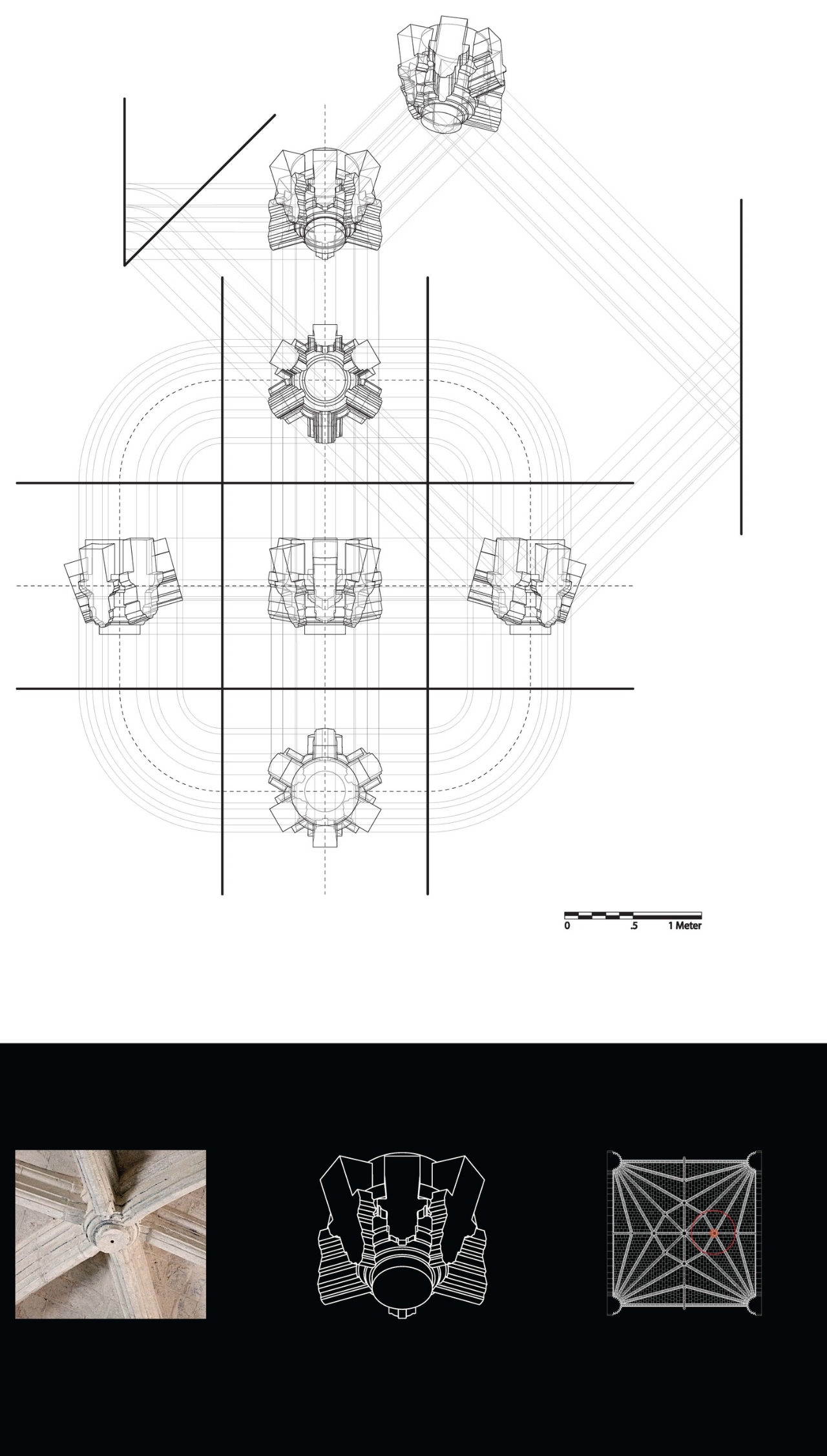This church was the tallest of the Americas during the sixteenth century and it is known that six thousand Mixtecs worked in ten groups of six hundred for the erection of this building.
THE CHURCH OF YANHUITLAN
The plan of Santo Domingo Yanhuitlán’s church shows four squares of 14m each and a semicircular apse. This single-nave church draws a rectangular shape formed by square modules repeated four times. Each of the squares hosts one vault. The interior walls of this church are completely flat, projecting the buttresses towards the outside. Since this church was built under the single-nave scheme, the complexity of construction resided in the vaulting systems that would make up the roof.
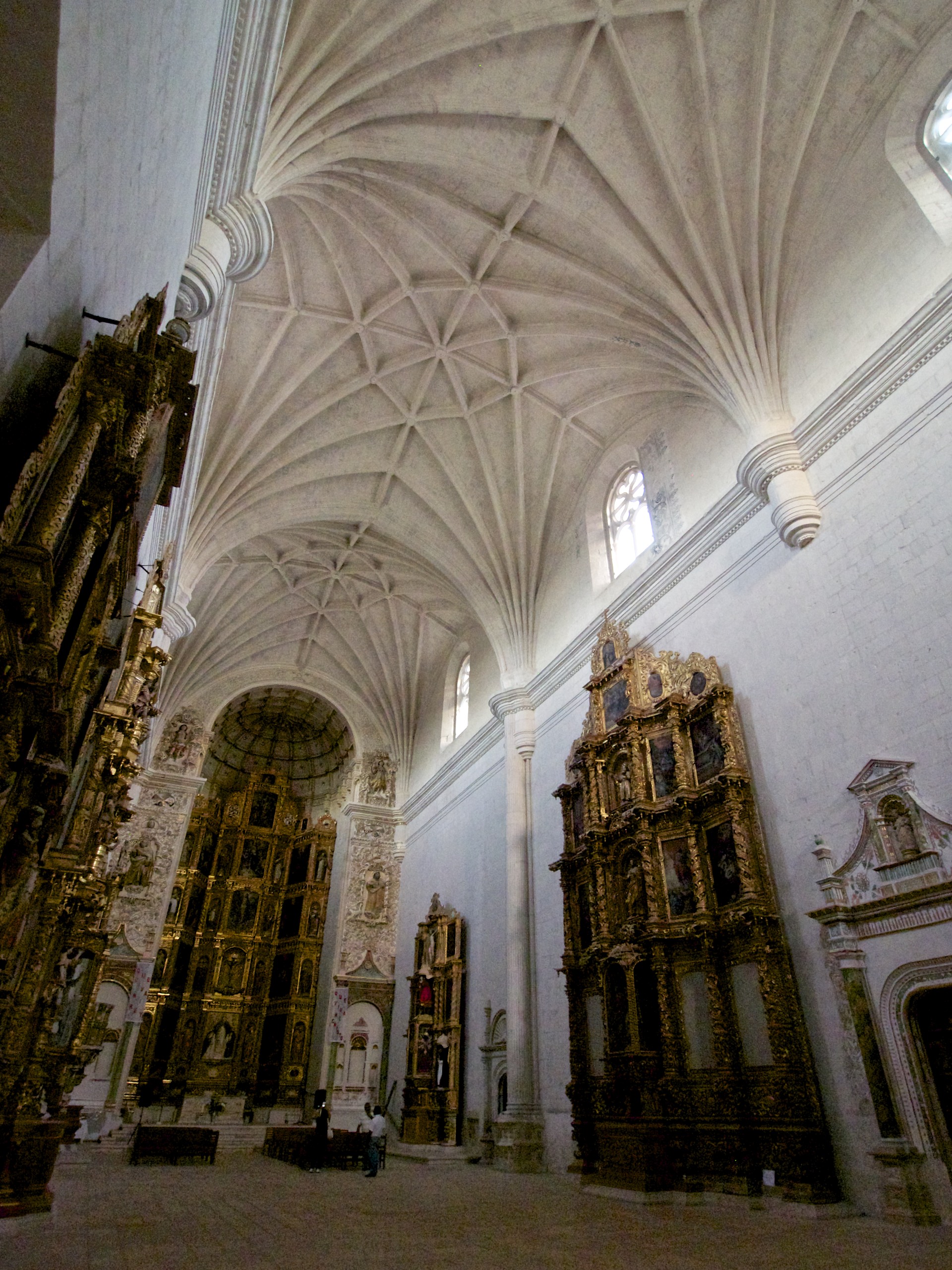
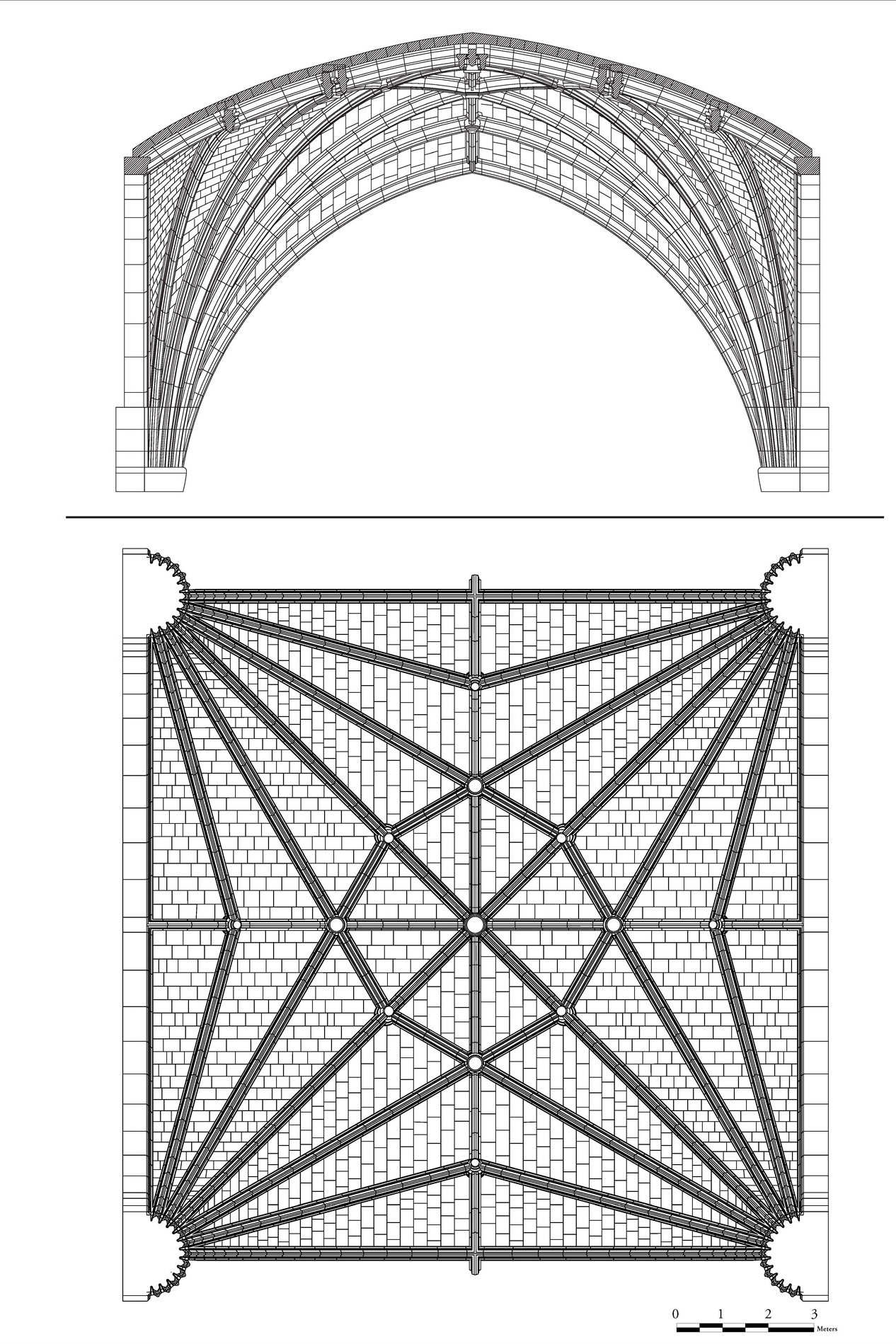
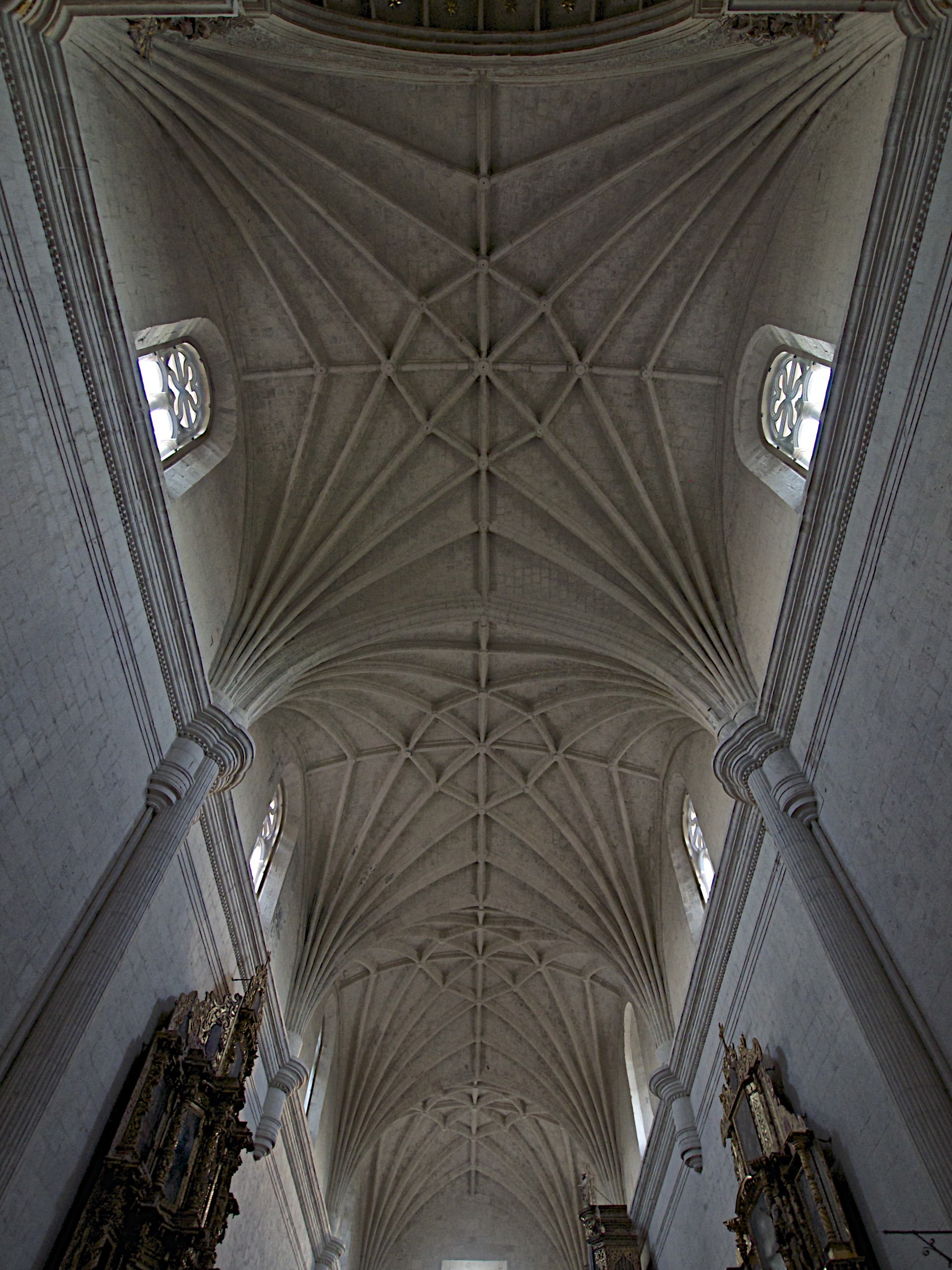
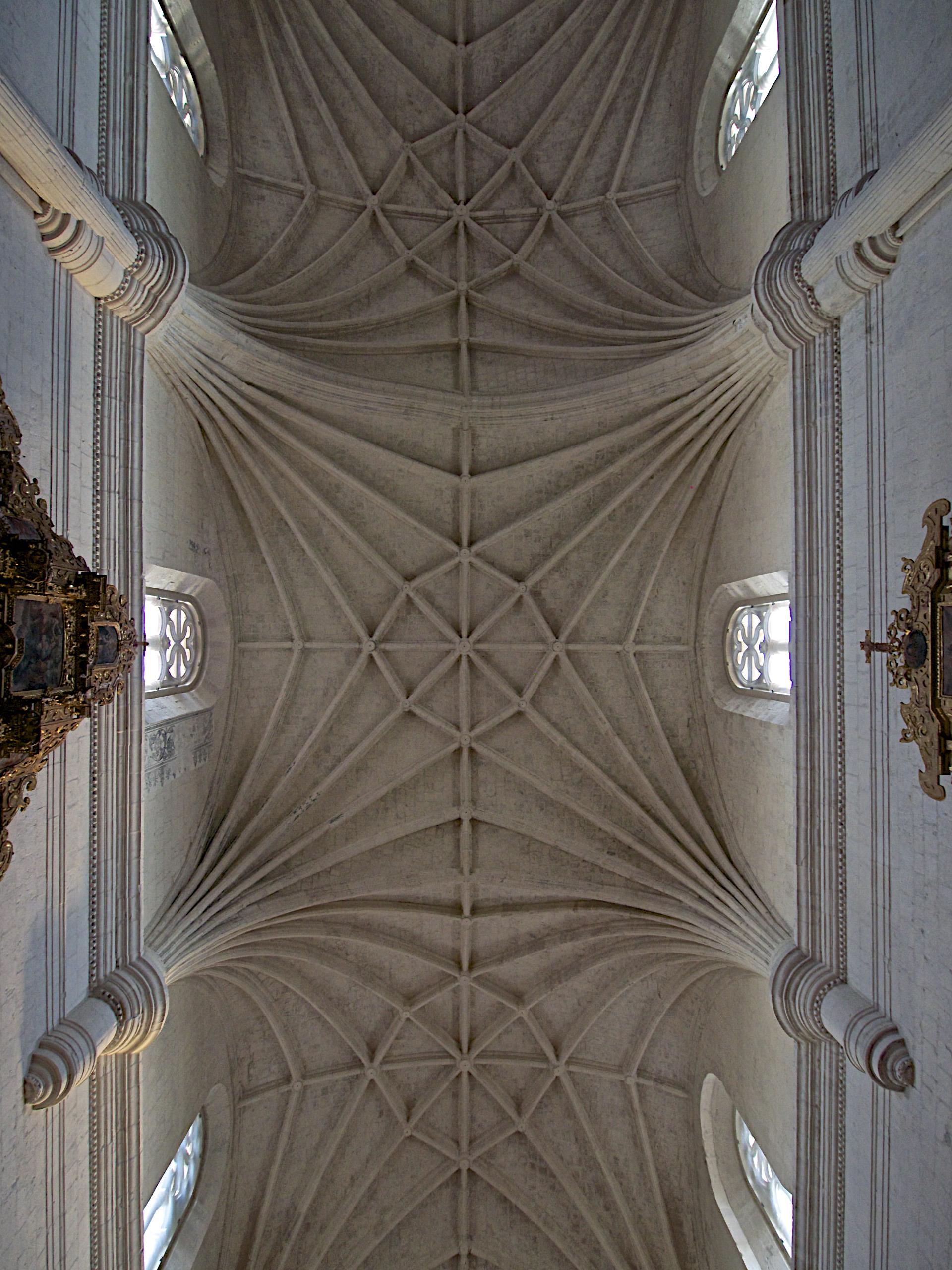
In the monastic order of the Dominicans the churches were a very important part of their ambitious projects, especially in the Mixteca where the church is much more elaborate than the rest of the monastic complex buildings. We should remember that ribbed vaults were used only when ostentatious construction was desired in colonial Mexico.
Designing Yanhuitlán’s vault on the horizontal projection
A peculiar feature of the square vaults of Yanhuitlán is the presence of two tiercerons in each web panel. The origins of this layout are found in the late-Gothic vaults of southern Europe. Looking at the horizontal projection (plan) each one is placed on a square. Later one can notice that the set of tiercerons running near the diagonal arches, called in this study “high tiercerons”, are drawn with an equilateral triangle whose sides are equal to the initial square's sides. Once this equilateral triangle is drawn one can locate its vertex intersecting with the ridge rib (tip of the triangle) defining the position of the boss connecting the low tiercerons on each web panel. These vaults do not present warped ribs; instead, the high tiercerons continue until they intersect the diagonals, forming a ring with straight sections around the keystone. The double tierceron is not common in squared-plan vaults. Double tiercerons are typically used in rectangular-plan vaults as the second tierceron is used to divide the longer web panel in order to add structural rigidity.
Designing Yanhuitlán’s vault on the vertical projection
Once the lines were delineated on the horizontal projection, the common task of the designer was to draw each one of the arches of the vault on the vertical projection or section. Curiously, one can notice that the diagonals and tiercerons arches of Yanhuitlán’s vaults respond to the geometry of a sphere. The overall shape of this vault was predetermined and the arches respond to that geometry. This is a very peculiar vault solution, originated in Renaissance vault design practices. In addition to the spherical nature of this vault, this study has found that transverse and former arches reveal a particular solution. The design of these transverse and former arches followed a method known in Spain as “a la vuelta de la diagonal”, which was commonly used in Gothic vaults and also applied in some of the late-Gothic Spanish solutions. This form of defining arches is performed by transferring an arc already used in the vault to another arch of shorter span. The method is commonly visualized as rotating an arch to a different plane where the smaller arch develops. In these vaults the lower tiercerons are rotated to the plane where the transversal/former arches are situated. Arches are pointed as a result of this procedure, similar to those pointed arches found in Gothic European cathedrals.
stereotomy
A Renaissance vault differs from a Gothic vault because the geometry of the first followed preconceived forms while the geometry of the second is the result of the construction process. The Renaissance architect already knew in advance how the dome was going to be and this preconceived shape aimed to be spherical. The sphere in this period of time was a representation of the universe and all creation. The Yanhuitlán vault is one spherical. They can be linked to the Toledo school because their ribs and straight bonds find a precedent in the vaults of St. Juan de los Reyes in Toledo, built in the late fifteenth century. In this Spanish building one also notices that the vaults have double tierceron and straight bonds on the higher tierceron. Another precedent may be the vault in the church of the Dominican convent of Santa Cruz de Segovia, which was also designed in the late fifteenth century on square plan, double tercelete and straight bonds. Yanhuitlán bosses vary depending on the intersection. The intersection between the low tierceron and the ridge rib and the intersection between the diagonal and high tierceron extension are by means of a boss whose axis is directed towards the center of the dome. The rest of the bosses have a vertical axis. The layout of Yanhuitlán’s voussoirs within the web panels follows the "French style". The voussoirs’ stones are arranged similarly to a groin vault which is based on two equal cylinders intersecting perpendicularly with each other.
